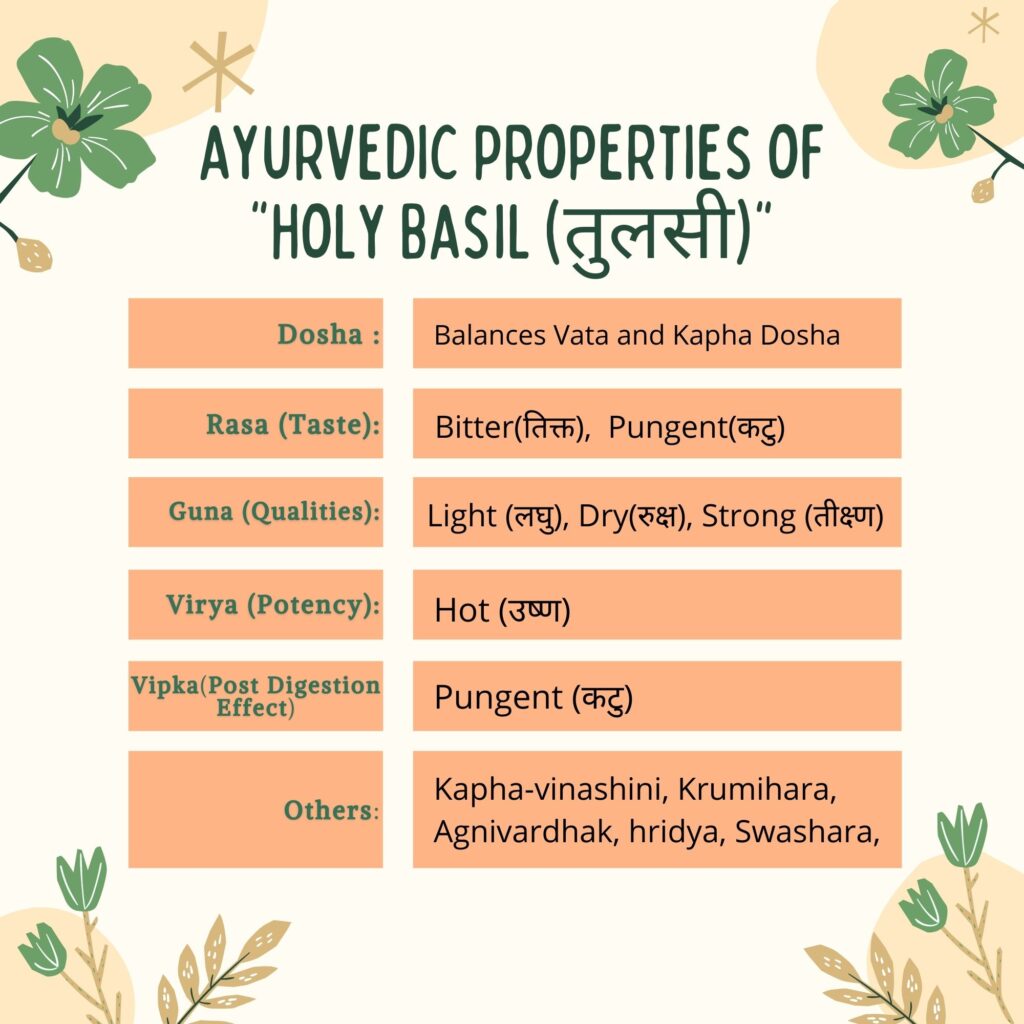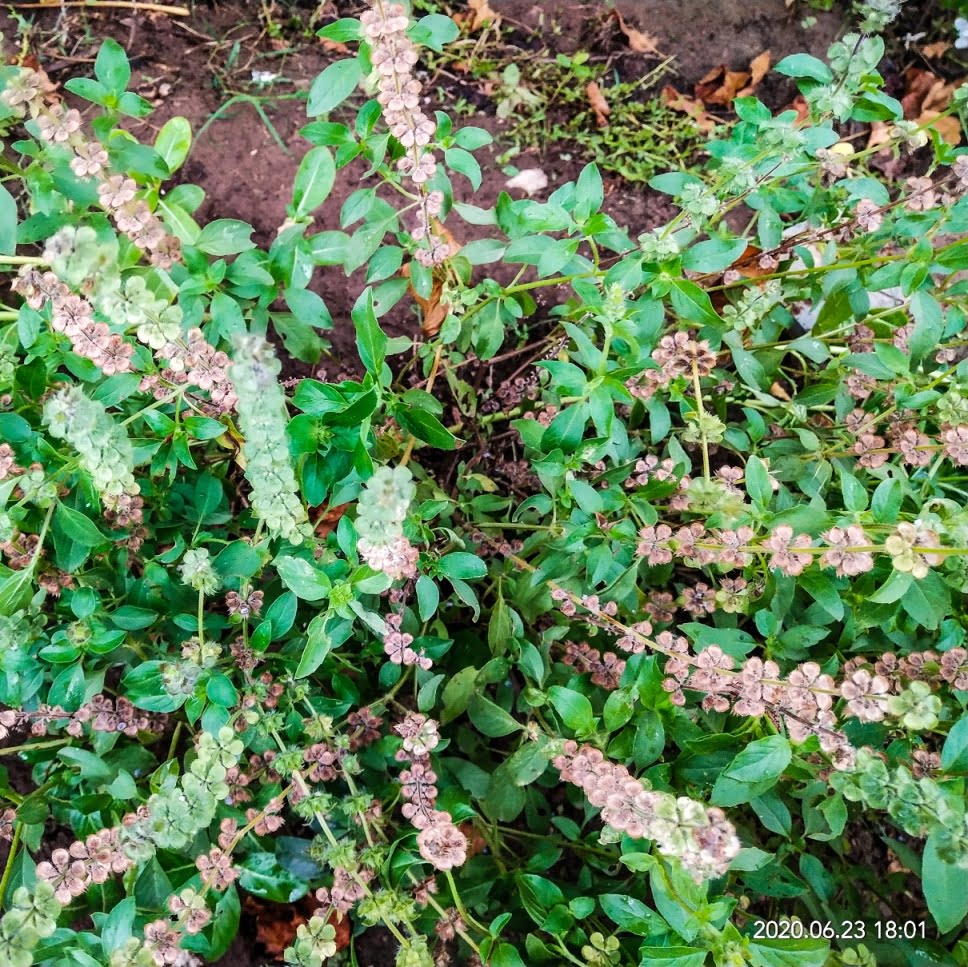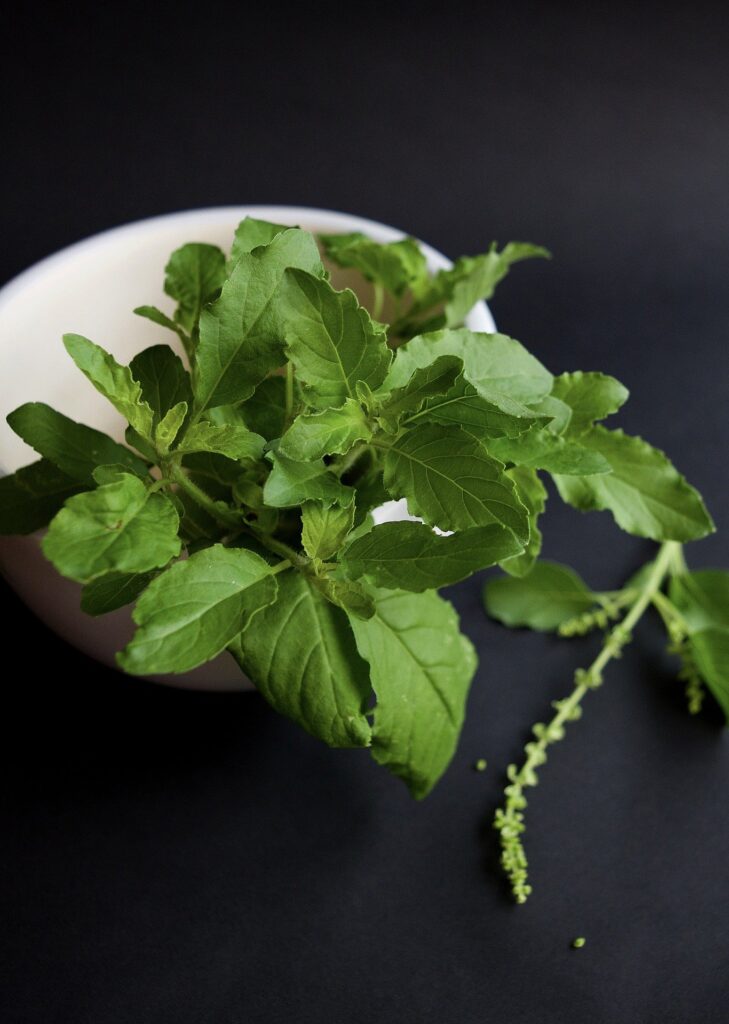Holy basil (Tulsi) (Ocimum sanctum L.): 25 benefits | Intro & Usages
Holy basil (Tulsi) Introduction
According to Ayurveda giving an explanation of Tulsi is like someone is trying to describe the vitality of the Sun. The Word “Tulsi” is taken from Sanskrit which stands for “Matchless one”. There are almost 150 different varieties of Holy basil (Tulsi) found across the globe. And Tulsi is also known as “Queen of Herbs”.
In India, Tulsi is considered, the most holistic, religious plant and is also worshipped by the people in every part of the country. Even in some parts of India some people organize the marriage of Tulsi and consider that day as the most holistic day of their lives. The importance of Tulsi is also mentioned in Ramayana.
Tulsi is one of the most beneficial medicinal herbs which can be used to cure almost all type of diseases. In India, it can be found in every next home as it is easy to grow and don’t need any fertilizer to cultivate. There are many varieties of Tulsi but most important which are mostly cultivated – White ( Rama Tulsi) & Black (Shyama Tulsi).
Common Names of Holy basil (Tulsi)

Morphology of Holy Basil/ Tulsi
Tulsi is having a special fragrance by which anyone can identify it easily. Its shrub is generally 30-60 cm tall, erect, branched with fragrance, delicate, and tulsi is a perennial plant. Its half stem is woody and branches are usually violet-red colored and covered with delicate hairs. While, its leaves are simple, opposite, 2.5-6.3 cm long with almost 1-3 cm in diameter.
Its flowers are small, white or violet or red coloured, 15-20 cm long. Fruits are micro, almost spherical. And Tulsi’s flowering & fruiting time is from July to till October. (The leaves of Shyama Tulsi are black or violet coloured).
There is a variety of Tulsi which is used in therapeutic(healing) purpose-
Ocimum americanum Linn. – It is 25-60 cm tall, branched, herbaceous, fragrant plant. Its leaves are 2-3.5 cm long lanceolate (भालाकार) with narrow ends. At the terminal end of the branches, there are white flowers. Its seeds are pink colored and get sticky when soaked into the water. Its panchang is fragrant, anti-fungal, anti-bacterial, and stimulate.

Nutritional properties of Holy basil (Tulsi)
Eugenol, Caryophyllene, Oleanolic acid, Ursolic acid, Rosmarinic acid, Carvacrol, Linalool and etc. Eugenol is used as a painkiller. And from the leaves of Tulsi, a yellowish-green oil is extracted and when it gets dried it turns into a crystalline form which is known as Tulsi Kapoor.
Qualities of Holy basil (Tulsi)
Tulsi is having numerous medicinal benefits such as – It helps in killing insects, improve digestive system, removes odour of the body, helps in toothache, Headache, Vomiting, Common cold, Cough, Diarrhoea, Dyspepsia, Urinary inflammation, impotency, post-delivery pain, and also helps in curing skin disorders. Tulsi is having anti-fungal, anti-viral, anti-bacterial and like these many properties which help us to stay healthy.
Ayurvedic Properties of Holy Basil (Tulsi)

Medicinal benefits and usages of Holy basil (Tulsi)
Headache
- Tulsi can treat the microbial infection which causes cold, cough and leads to fever.
- Feeding 1-2 gm powder of Tulsi’s shade-dried Manjari with honey will get rid of the headache.
- Swallowing 4-5 leaves of Tulsi with water every day will help in improving memory, your intelligence and will assist the development of the brain.
- Applying the oil of Tulsi on the head will eradicate lice.
- Tulsi oil can also be used for improving the complexion of face if its oil is applied on the face.
Eye disorder
- As Tulsi is having a quality of anti-inflammatory which assist eyes to restrict infection of bacteria, virus & fungus. Tulsi is also helpful for reducing night blindness.
- Night blindness- 5 mg juice of Tulsi can be put into the eyes 2-3 times in a day will help in curing Night blindness.
Nasal disorder
Rhinitis disorder- Grind the leaves or Manjari of Tulsi smelling these will suppress Rhinitis disorder.
Ear pain
Dropping 2 drops of heating juice of Tulsi’s leaves will suppress the pain of ear.

Holy basil (Tulsi) for Mouth disorders
Tulsi is consist of some chemical components which help to eradicate pathogens of the mouth like bacteria which cause cavities and bad breath problems. With this, it also helps to reduce mouth ulcers.
Toothache
Make the small ball of Tulsi’s leaves along with black pepper and keeping these underneath aching tooth will get you relaxation.
Sore throat (स्वरभंग)
- Sucking the roots of Tulsi like muleti (मुलेठी) will help in sore throat.
- Mix juice of Tulsi in slightly warm water doing gargle from it will give benefits in throat problems.
Holy basil (Tulsi) for Thorax disorders
- There are some essential components in the Tulsi plant’s oil like Eugenol, Cineole, etc which assist the body to overcome the common cold, cough, asthma, influenza, and other respiratory problems.
- Cough- If there is a high intensity of cough then taking 5-10 ml Tulsi leaves’ juice with black pepper powder will control intensity.
- Mix Manjari, ginger root, onion juice & honey. Giving this to a patient for licking will help in curing dry cough & Asthma.
- Take 500 ml water and make a decoction of 50 gm basil leaves ( with Manjari), 25 gm Ginger, 15 gm black pepper. Boil this mixture until the water is reduced to 1/4 th. Now, strain the solution, and add 10 gm green cardamom seeds powder and 200 gm sugar. And now cook this mixture again till it becomes like a syrup. And store this in any bottle.
- Giving half a teaspoon of this syrup to children and 2 teaspoons to adults will give benefits in whooping cough, throat infections, and bronchitis.

Abdominal disorders
Vomiting
Take 10 ml Tulsi leaves juice and mix equal part of ginger’s juice and 500 mg powder of cardamon. Feeding this will stop vomiting.
Diarrhoea
Grind both 10 leaves of Tulsi & 1 gm cumin and mix honey in it. Giving this to the patient 3-4 times a day will help to control diarrhea & griping of the stomach.
Dyspepsia (अग्निमांद्य)
Giving juice of Tulsi leaves 3 times a day before food will help in dyspepsia & liver-spleen disorders.
Dyspepsia (अजीर्ण)
Grind 2 gm Manjari of Tulsi & giving this with black salt 3 times a day will help in Dyspepsia.
Reproductive parts-related disorders
Impotency- Mix equal amount of jaggery in the powder of Tulsi seeds or roots. Feeding this mixture in the quantity of 1-3 gm with cow’s milk regularly will cure the disorder in almost 1 month to six weeks.
Mineral deficiency can be cured if 1 gm seeds of Tulsi is given with milk in morning & evening every day.
Post-delivery pain
Mix Khand and old jaggery in the juice of Tulsi leaves. It can be given to the lady, immediately after the delivery. It helps in curing the pain after delivery. (Must consult to Doctor)
Skin related disorders
Tulsi has Eugenol which helps skin to prevent disorders related to skin. Tulsi also kills bacteria and prevent & heal ulcers, pimples, and protect the skin.
Leprosy (कुष्ठ) disorder
- Taking 10-20 ml juice of Tulsi leaves every day in morning & evening gives benefits in leprosy.
- Grind altogether Tulsi leaves juice, Lime stone powder (चूना), ghee of cow. Applying this on leprosy will give benefits.

Ringworms & Ulcers
Grind the leaves of Tulsi in the juice of lemon, applying this paste on ringworm, ulcer, etc will give benefits.
Wounds
For healing the wound early, boil 10-20 gm. basil leaves in the water and let it cool down. Applying this paste on ulcer will heal it fast.
Holy basil (Tulsi) for Urticaria (शीतपित्त)
Applying the juice of Tulsi leaves on the body will suppress उदर्द and Urticaria.
Overall body-related
Vitality
Giving strength to the body- Mix 40 gm. Mishri/sugar in 20 gm. Tulsi seeds’ powder. Grind it, and giving 1 gm of this mixture in winters for few days helps in protecting from Vata & Kapha disorders. It also improves the body immune system and also gives strength to ligaments.
Mix double quantity of cow’s warm ghee in 5-10 ml juice of Krishna Tulsi. Licking this helps in Vata Kapha disorders.
Tulsi for malaria
Tulsi is having anti-malaria property. When air comes in contact with tulsi plant, generates such an effect that malaria-causing mosquitoes fly away.
A decoction made up of Tulsi leaves. Giving it at the interval of 3 hours help in curing malaria.
Normal fever
Grind the leave of Tulsi, white cumin seeds, small peepal & sugar and giving this to the patient in morning & evening every day gives benefits.
Blood pressure
Tulsi is a good source of vitamin-C & some antioxidants which help in reducing stress and also reduce blood pressure.
kidney stone
Tulsi can also help in reducing inflammation of the urinary bladder and can break kidney stones into pieces.
Immune System
The “Queen of herbs ” has ample health benefits Like these, and there are numerous medicinal benefits of Tulsi that keep us protected from many disorders and help to improve our body’s immune system. that’s why it is being a prime part of every immunity booster supplement nowadays.
Useful Parts of Holy basil (Tulsi)
- Leaf
- Root
- Seed
Doses of Holy basil (Tulsi)
- Tulsi Juice : 10-20ml
- Tulsi Decoction : 50ml
- Powder : 2-6 gm
Buy Just Jaivik Holy basil (Tulsi)
Read more



2 thoughts on “Holy basil (Tulsi) (Ocimum sanctum L.): 25 benefits | Intro & Usages”
Comments are closed.